Mind-Blowing Images Of The Tiniest Things On Earth
This isn't a flower you're seeing, but the eggs of a louse fly being protected by what is likely a parent. These louse flies often turn up in bird's nests throughout Europe and Asia and, when hatched, feed off of bird's blood. Yousef Al Habshi took this amazing image. This is one of of the many honorable mentions in the competition; we've selected 12 to include here.

This little guy, as you might have guessed, is invisible to the human eye. Measuring in at between 0.0020 to 0.0130 inches, the Paramecium is often used in the lab to study biological processes because some species are easy to induce reproduction and division. Arturo Agostino took this image.
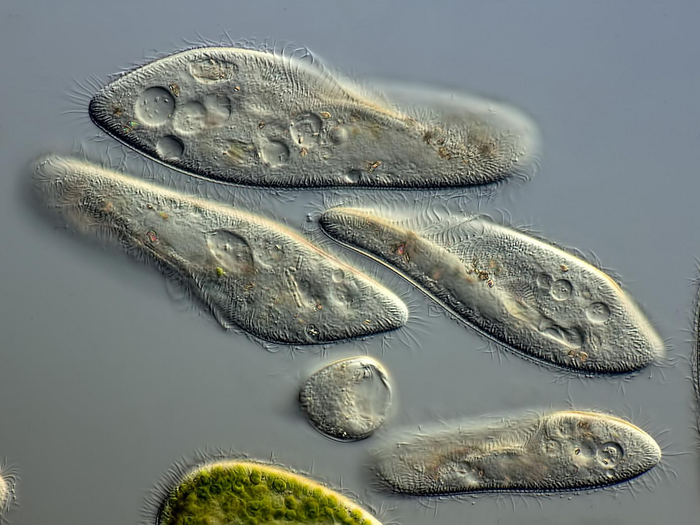
Dr. Katie Matho snapped this colorful shot of Brainbow mice neurons. Brainbow mice have been designed so that neurons randomly choose combinations of red, yellow, and cyan fluorescent proteins. Each one glows a specific color, which enables scientists to visualize brain circuits, explains Matho.

The fruit fly is a popular subject when it comes to studying genetics because they share 75% of the genes that cause disease in humans. Here is an image, captured by William Voss, of a type of fruit fly cell called S2.
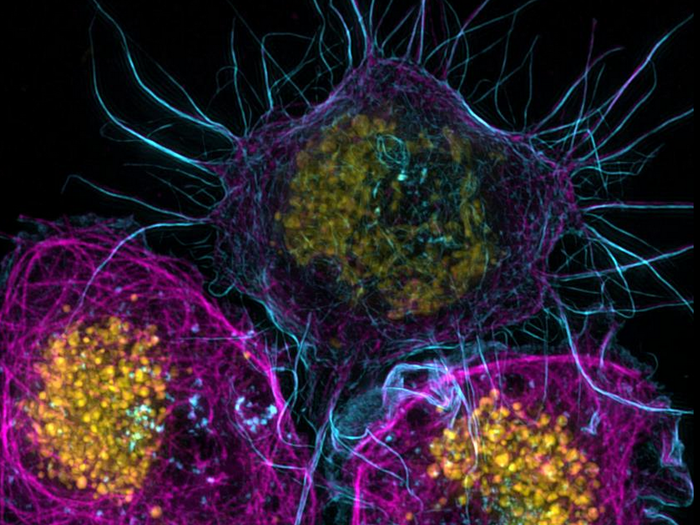
You can clearly see the eight legs of this Tardigrade, known as the water bear, which is a type of microscopic animal. It's usually about 2 hundredths of an inch long, which is why Wim van Egmond had to magnify the animal by 25 times for this amazing video.

Charles Krebs got up close to a peacock for this stunning shot of a peacock feather magnified 100 times.
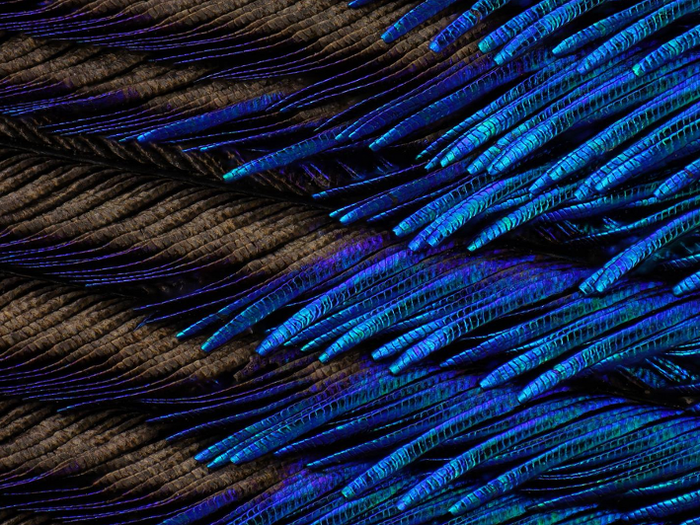
You probably won't recognize what this is, but if you've ever taken the antibiotic penicillin, you'll be familiar with it. This is the fungus, called Penicillium, that penicillin comes from. Wim van Egmond magnified the fungus 20 times to create this beautiful video of a fungus forest.
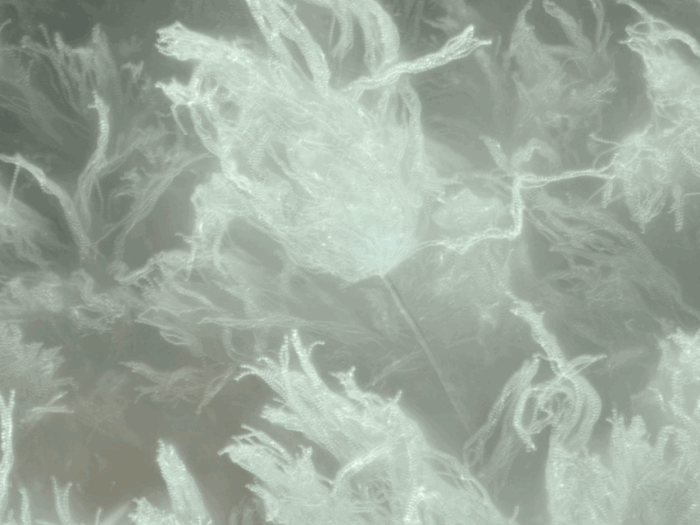
Dr. Gopinath Meenakshisundaram and Dr. Prabha Sampath captured this image of human skin cancer cells.
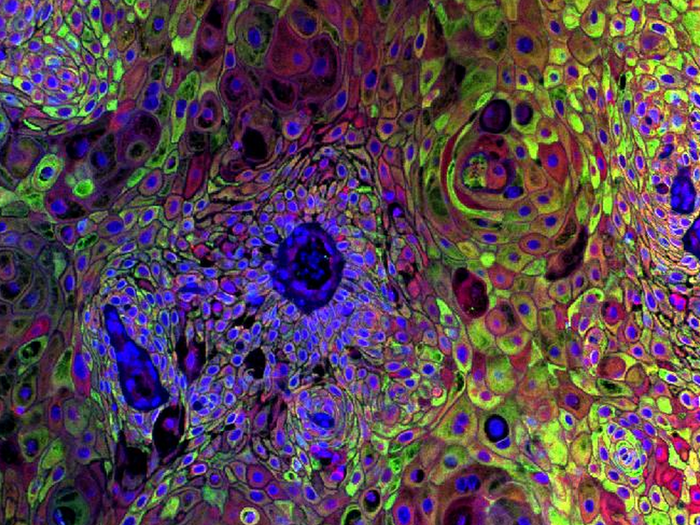
This intriguing image is of an incredible cricket appendage: the tongue. The photographer, David Maitland, describes how the fan-like tracheal pattern gives crickets an exquisite sense of taste.
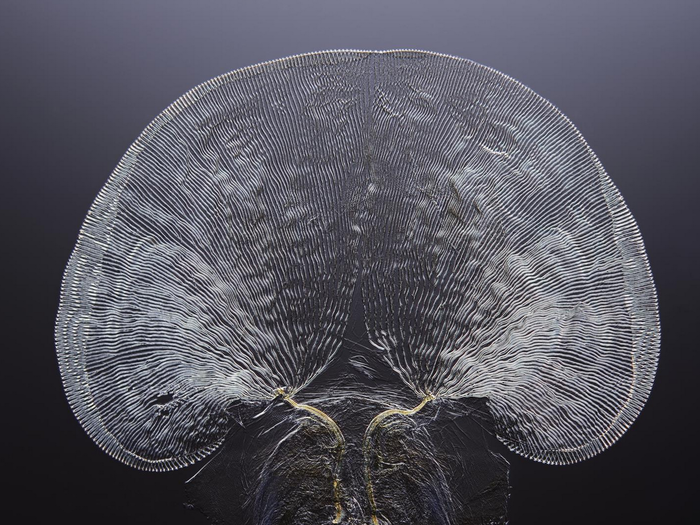
Charles Krebs produced this incredible image of a mosquito larva, which he made using a technique called dark field microscopy. The image is magnified 100 times.
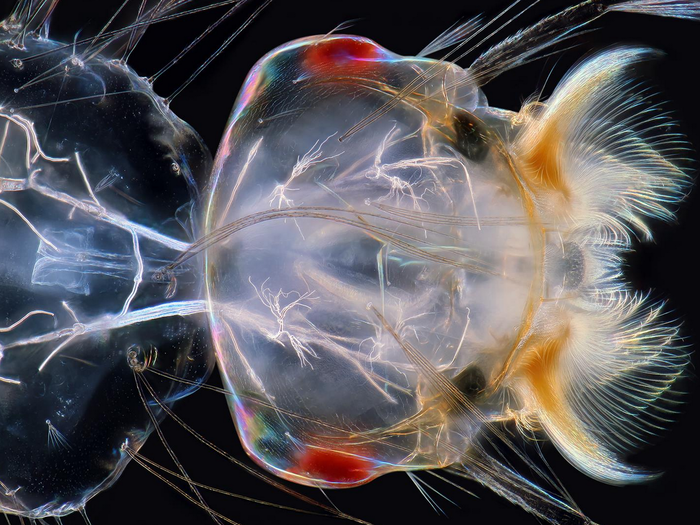
The wildflower commonly known as the Red Robin or Dove's foot is already beautiful from a distance, but get up close and it's even more stunning. Here, you can see individual beads of pollen captured by Karl Gaff.
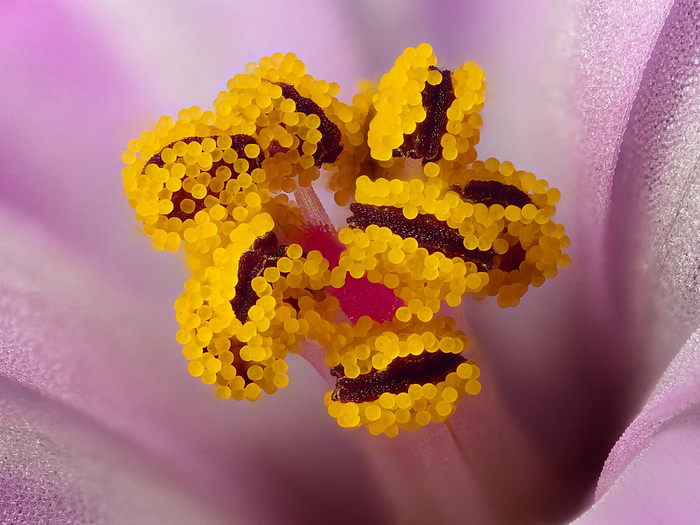
W. Todd Farmer magnified a portion of the mouse cerebellar cortex, a part of the brain, by 20 times to produce this image. In the middle in green you see what is called a Purkinje neuron, which is in the midst of other, unlabeled neurons.
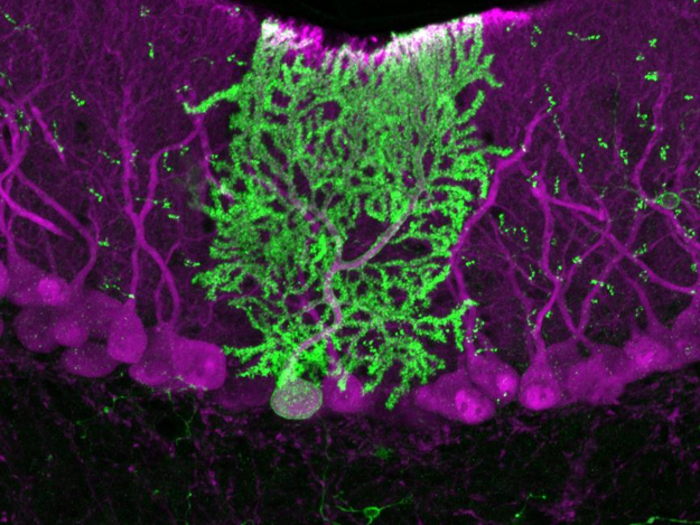
The tenth-place winners of the competition were Philipp Keller, Fernando Amat, and Misha Ahrens, who produced this incredible video showing the neural activity of a zebrafish brain. This is the first time we have ever seen single-neuron activity in the brain of a living vertebrate, the authors explain.

Until recently, humans thought they had invented gears, but thanks to Igor Siwanowicz, we know that this animal, called the green coneheaded planthopper, beat us to it. This insect uses its gears to help it jump, and the force behind this jump is roughly 500 times as powerful as the Earth's gravity. Siwanowicz had to magnify the insect 200 times to get a look at these incredible cogs, and won ninth place for the work.
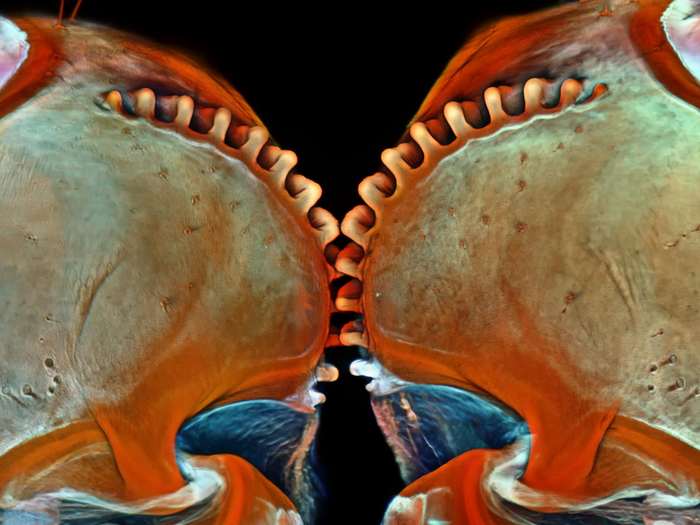
What would you guess this is? Probably not the mouth parts of what is known as a vampire moth. These moths feed on fruits and mammal blood. Matthew S. Lehnert and Ashley L. Lash clearly show, at 10 times magnification, the hooks and barbs that tear and cut fruit and mammal flesh alike. Lehnert and Lash came in eighth place for this creepy and equally stunning image.
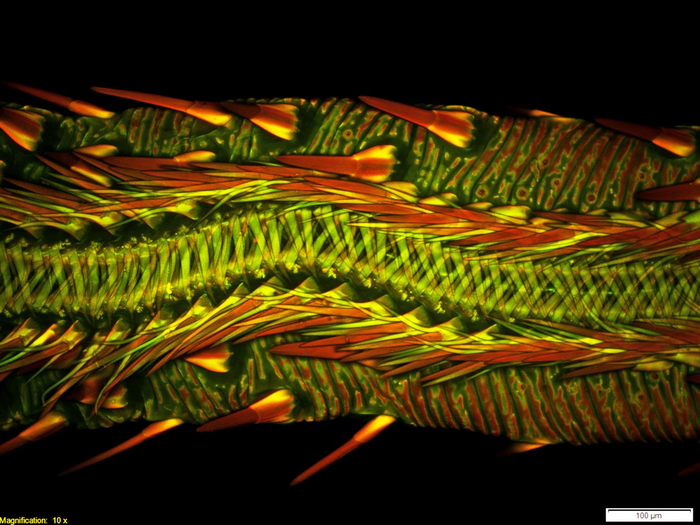
Oleksandr Holovachov was awarded seventh place for this lovely image of a butter daisy flower magnified 2 times. Check out all of that pollen speckling the inner petals and central ovary like fairy dust.
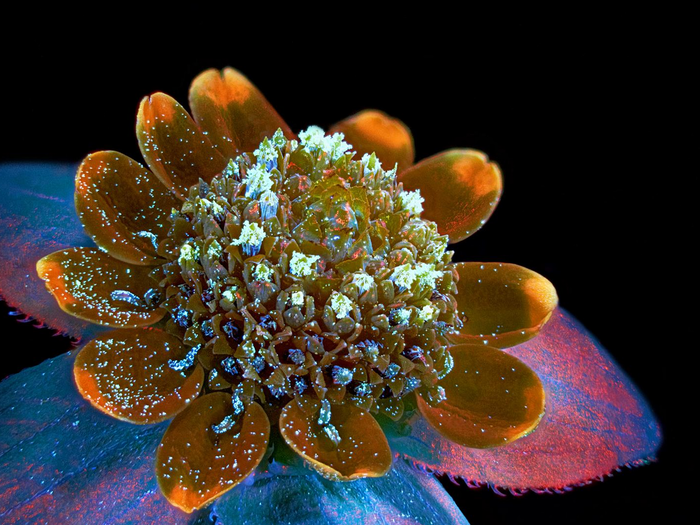
If the contest's winners are not photographing mouse brains, then it's worm larva. This image, taken by David Johnston at 10 times magnification, is of a Magelonid polychaete worm, which is a type of worm that can be found across the globe and grows no longer than about 4 inches. This image was awarded sixth place.

This intricate image includes cell nuclei, astrocytes (cells of the central nervous system), and blood vessels within the brain of a mouse. You have to hand it to Madelyn May for turning a complex system into such a beautiful image, which was awarded fifth place.
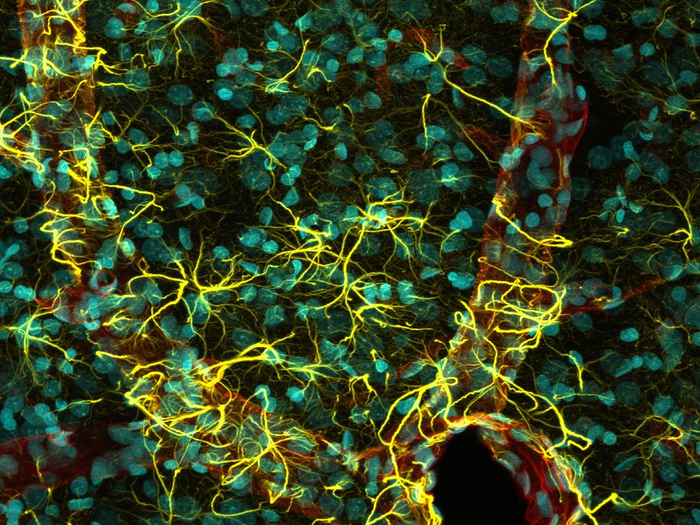
Here, Csaba Pintér captures two weevil beetles and snags fourth place in the competition. In nature, these weevils are a bright green, which helps them blend in with the leaves they call home. The beetles are usually about one fifth of an inch long.
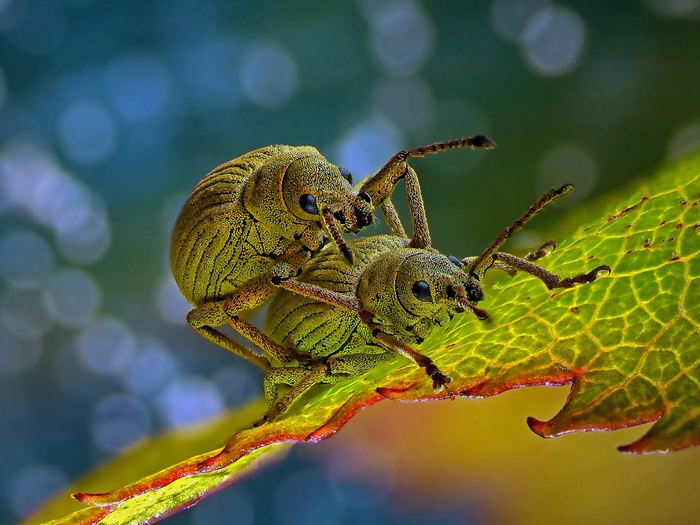
Beware of the barnacles! Igor Siwanowicz magnified the image of this particular barnacle's appendages, to show the wispy hairs that help this arthropod sweep food into its mouth to stay alive. This third-place image is magnified 100 times.
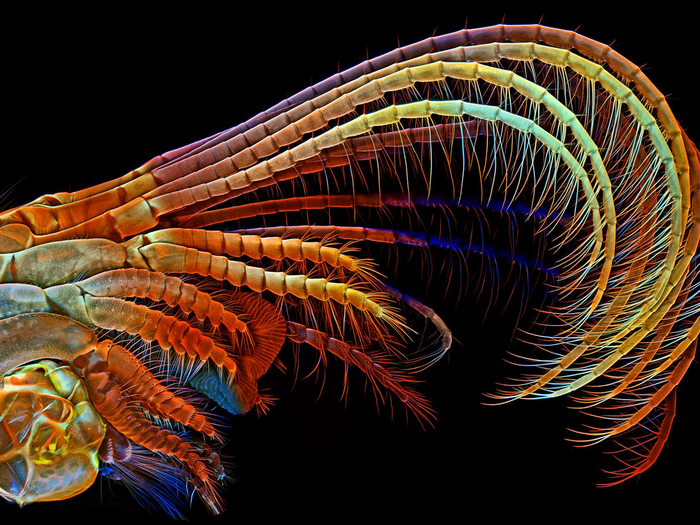
Thomas Deerinck took this incredible image of a rat brain, which won him second place in the competition. The image zeroes in on a part of the brain called the cerebellum, which is important for movement as well as other functions. The image is magnified 300 times.
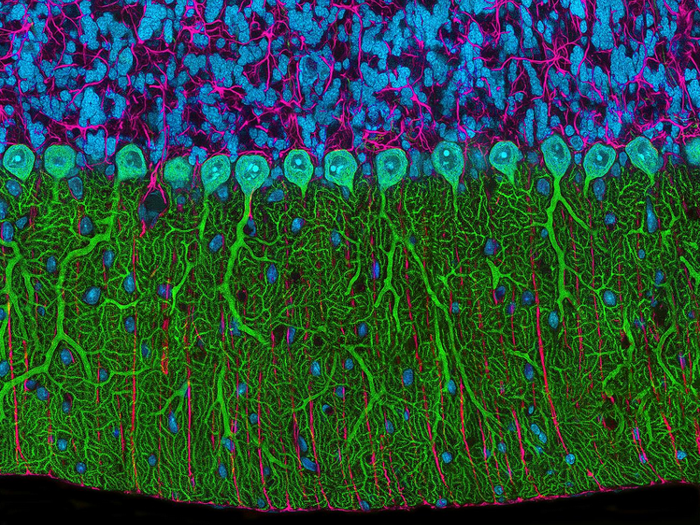
First-place awardees William Lemon, Fernando Amat, and Philipp Keller recorded this high-speed video of fly embryo in 30-second intervals for 24 hours. The video is made of more than 2 million images that show individual fly embryonic cells dividing, migrating, and diversifying from the time of conception to birth. It could help scientists study cell lineages, cell differentiation, and other essential steps in the development of cell biology, the photographers explain.
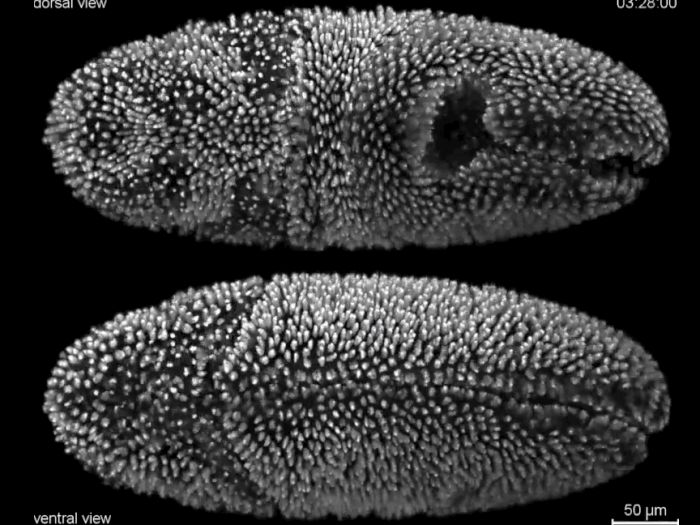
Can't get enough tiny things?
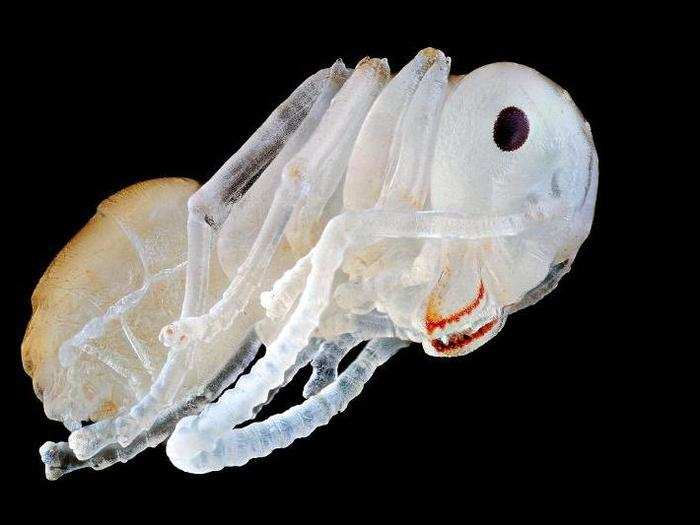
Popular Right Now
Popular Keywords
Advertisement